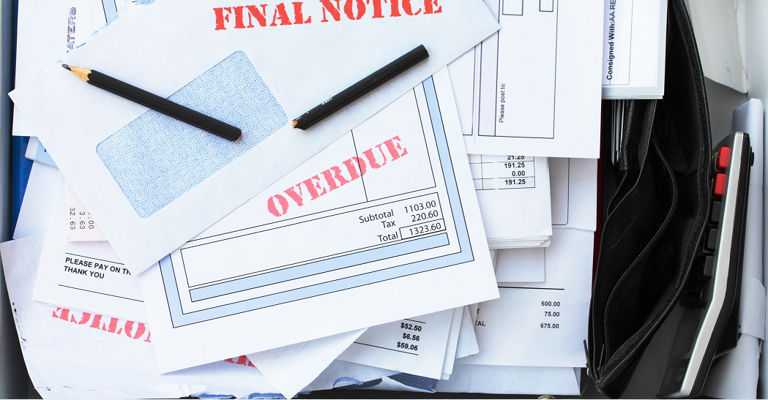Nine ways to manage your debtors and deal with late payment

Posted: Wed 27th Sep 2017
It pays to pro-actively manage your debtors to avoid a cash flow crisis and keep the business' finances on an even keel. These tips will help you deal with debtors and keep your cash flowing.
1. Know your customer
Make sure they are able to pay their bills by getting a credit check on them. This particularly applies to larger customers.
Ask yourself what would be the impact on your business cash and trading results if a debtor became insolvent owing you two to three months’ sales as well as any investment in stock and work in progress.. So investing £20 or so in a credit check is good value.
Also check if the customer is a signatory to the Prompt Payment Code, the government-backed code where businesses commit to paying within 60 days.
2. Agree payment terms before you supply
If they insist that their payment terms are 60 or 90 days you should find out before starting the contract and make a positive decision to take the work or not and figure out how you will manage until the debt is paid.
You may have to run a cash-flow forecast to measure the impact the additional business has on cash flow.
3. Invoice accurately clearly and promptly
Make sure you know to whom and where to send invoices and what detail they must contain. Raise invoices as soon as the work is completed and don’t wait until the end of the month.
4. Have a system for chasing customers payments
Telephone shortly after you send your invoice and progress the invoice through the customer's invoice payment system noting who you speak to and what is said in conversations. Monitor payment performance closely and complain if promises are not kept.
5. Be prepared to escalate complaints if payment is not received
This applies both in terms of who makes the contact in your business and the level of management within the customer’s management you talk to.
6. Discounts for prompt payment can be worthwhile
Obviously, this depends on your need for the payment. However, if payments slip and the debtor still takes the discount, that it is effectively a price reduction.
7. Factoring and invoice discounting can help finance increasing sales
Customers must be creditworthy and you must be prepared for the additional checks and procedures which come with this sort of finance.
You are likely to get more finance than from a conventional bank loan or overdraft and you will be able to accommodate customer requests for extended payment terms.
Recent developments in internet finance mean factoring or invoice discounting via the internet can be more flexible and cheaper than conventional arrangements.
8. Many customers prefer or demand invoices electronically
Consider how you will e-invoice before agreeing a contract. The key is choosing a system which is compatible with your customer’s system.
9. E-invoices can be electronically submitted to customers
This includes by email direct from your accounting platform or integrating with the accounting platform and sending direct to the customer portal:
Platform sends automated reminders to customers
Customer updates to status of invoice in their system can result in automatic update of your collections forecast
Platform provides feedback on customers' payment performance and cost of outstanding debt
Platform can be linked to an application to a finance provider
You may need help with some aspects of these tips such as choosing the accounting software to prepare and submit e-invoices and to progress payment through customers' payment systems requires compatibility with the customers' systems.
This is something which your accountant can advise on. They can also advise on how to prepare cash-flow forecasts.
Get business support right to your inbox
Subscribe to our newsletter to receive business tips, learn about new funding programmes, join upcoming events, take e-learning courses, and more.
Start your business journey today
Take the first step to successfully starting and growing your business.
Join for free
